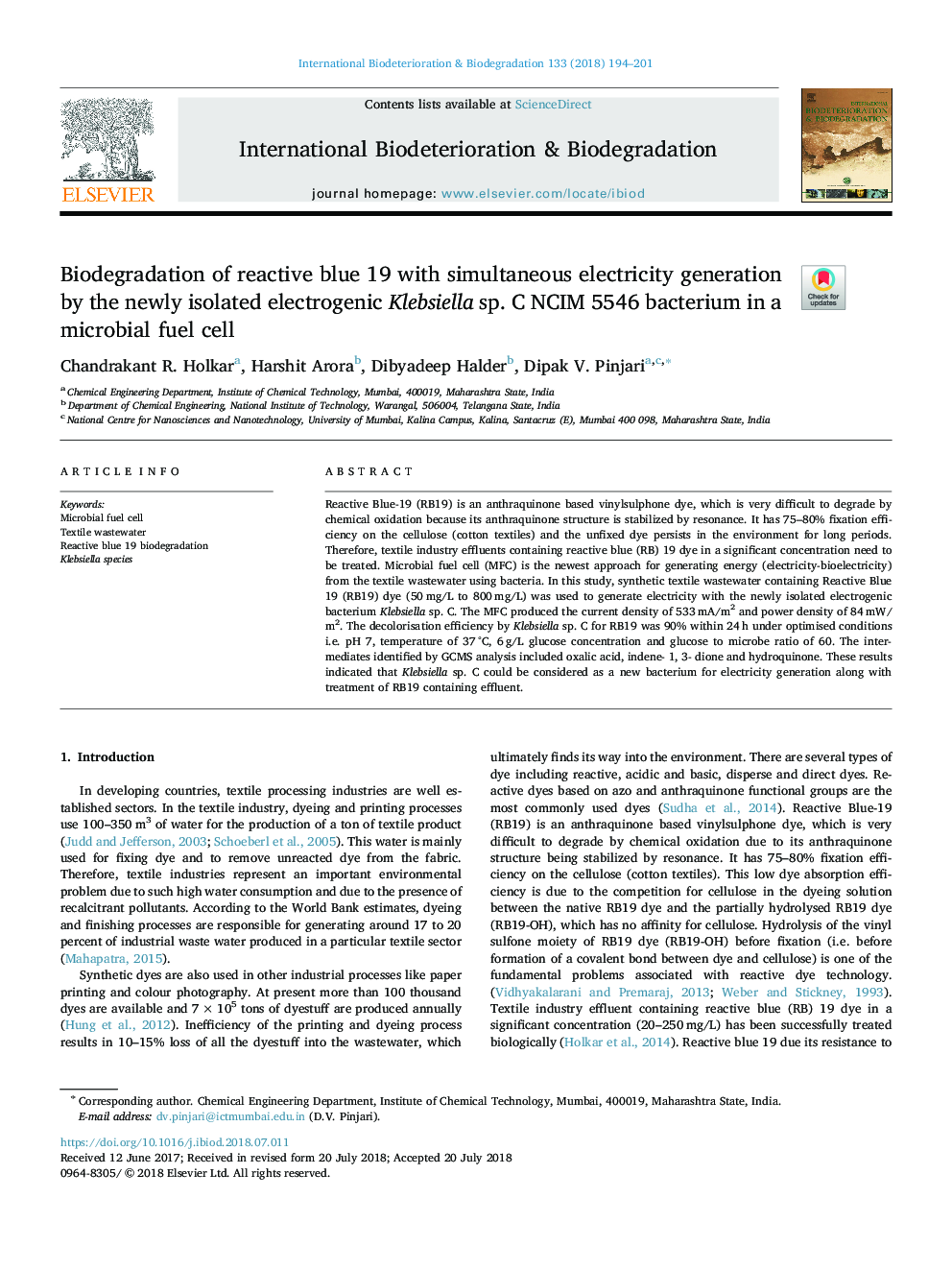| Article ID | Journal | Published Year | Pages | File Type |
|---|---|---|---|---|
| 8843714 | International Biodeterioration & Biodegradation | 2018 | 8 Pages |
Abstract
Reactive Blue-19 (RB19) is an anthraquinone based vinylsulphone dye, which is very difficult to degrade by chemical oxidation because its anthraquinone structure is stabilized by resonance. It has 75-80% fixation efficiency on the cellulose (cotton textiles) and the unfixed dye persists in the environment for long periods. Therefore, textile industry effluents containing reactive blue (RB) 19 dye in a significant concentration need to be treated. Microbial fuel cell (MFC) is the newest approach for generating energy (electricity-bioelectricity) from the textile wastewater using bacteria. In this study, synthetic textile wastewater containing Reactive Blue 19 (RB19) dye (50â¯mg/L to 800â¯mg/L) was used to generate electricity with the newly isolated electrogenic bacterium Klebsiella sp. C. The MFC produced the current density of 533â¯mA/m2 and power density of 84â¯mW/m2. The decolorisation efficiency by Klebsiella sp. C for RB19 was 90% within 24â¯h under optimised conditions i.e. pH 7, temperature of 37â¯Â°C, 6â¯g/L glucose concentration and glucose to microbe ratio of 60. The intermediates identified by GCMS analysis included oxalic acid, indene- 1, 3- dione and hydroquinone. These results indicated that Klebsiella sp. C could be considered as a new bacterium for electricity generation along with treatment of RB19 containing effluent.
Related Topics
Life Sciences
Environmental Science
Environmental Science (General)
Authors
Chandrakant R. Holkar, Harshit Arora, Dibyadeep Halder, Dipak V. Pinjari,
